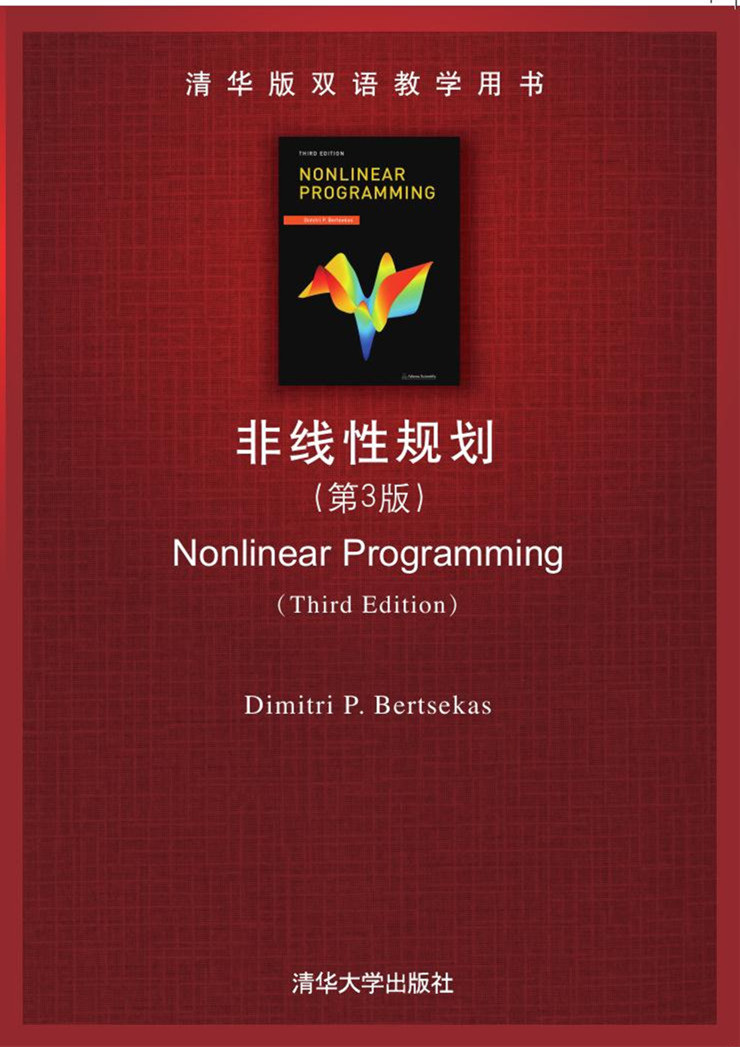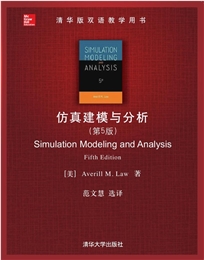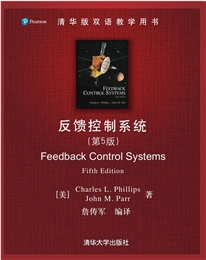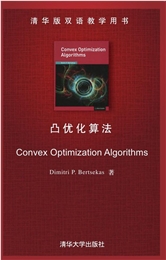





定价:169元
印次:1-8
ISBN:9787302482345
出版日期:2018.06.01
印刷日期:2022.12.05
图书责编:崔彤
图书分类:教材
本书涵盖非线性规划的主要内容,包括无约束优化、凸优化、拉格朗日乘子理论和算法、对偶理论及方法等,包含了大量的实际应用案例. 本书从无约束优化问题入手,通过直观分析和严格证明给出了无约束优化问题的最优性条件,并讨论了梯度法、牛顿法、共轭方向法等基本实用算法. 进而本书将无约束优化问题的最优性条件和算法推广到具有凸集约束的优化问题中,进一步讨论了处理约束问题的可行方向法、条件梯度法、梯度投影法、双度量投影法、近似算法、流形次优化方法、坐标块下降法等. 拉格朗日乘子理论和算法是非线性规划的核心内容之一,也是本书的重点.
本书为解决连续优化问题提供了全面而实用的方法。内容基于严格的数学分析,但尽量用可视化的方法来讲述。本书将重点放在最新的发展以及它们在很多领域的广泛的应用,例如大规模供给系统、信号处理和机器学习等。特色二:编写上主要采用“表达科普化、图表并茂”方式,强调“可操作性”,易学易用。图书出版与课程网站相辅相成,辅导读物和思考题在课程网站上体现。
Preface to the Third Edition The third edition of the book is a thoroughly rewritten version of the 1999 second edition. New material was included, some of the old material was discarded, and a large portion of the remainder was reorganized or revised. The total number of pages has increased by about 10 percent. Aside from incremental improvements, the changes aim to bring the book up-to-date with recent research progress, and in harmony with the major developments in convex optimization theory and algorithms that have occurred in the meantime. These developments were documented in three of my books: the 2015 book ¡°Convex Optimization Algorithms,¡± the 2009 book ¡°Convex Optimizat...
1. Unconstrained Optimization: Basic Methods . . . . . . p. 1
1.1. OptimalityConditions . . . . . . . . . . . . . . . . . . . p. 5
1.1.1. Variational Ideas . . . . . . . . . . . . . . . . . . . . p. 5
1.1.2. MainOptimalityConditions . . . . . . . . . . . . . . . p. 15
1.2. GradientMethods 每Convergence . . . . . . . . . . . . . . p. 28
1.2.1. DescentDirections and StepsizeRules . . . . . . . . . . p. 28
1.2.2. ConvergenceResults . . . . . . . . . . . . . . . . . . p. 49
1.3. GradientMethods 每Rate ofConvergence . . . . . . . . . . p. 67
1.3.1. The LocalAnalysisApproach . . . . . . . . . . . . . . p. 69
1.3.2. TheRole of theConditionNumber . . . . . . . . . . . . p. 70
1.3.3...
同系列产品
查看详情-

工程电磁场(第9版)
[美]威廉姆·H.哈特(William H. Hayt,Jr.) [美]约翰·A.巴克(John A. Buck) 著 袁建生选译
ISBN:9787302530275
定 价:109元
-

仿真建模与分析(第5版)
[美]Averill M.Law 著,范文慧 选译
ISBN:9787302473305
定 价:159元
-

反馈控制系统(第5版)
[美] Charles L. Phillips [美]John Parr 著,詹俦军 编译
ISBN:9787302440017
定 价:98元
-

凸优化算法
(美)Dimitri P. Bertsekas 著
ISBN:9787302430704
定 价:89元



 电子书
电子书
 在线购买
在线购买
 分享
分享






